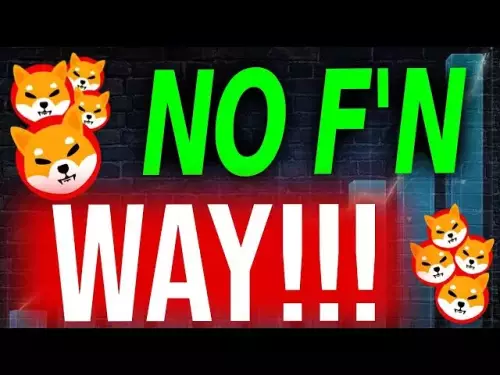-
 Bitcoin
Bitcoin $112100
0.77% -
 Ethereum
Ethereum $4474
3.78% -
 XRP
XRP $2.851
0.46% -
 Tether USDt
Tether USDt $1.000
0.01% -
 BNB
BNB $856.0
0.45% -
 Solana
Solana $209.3
1.04% -
 USDC
USDC $0.9998
-0.02% -
 Dogecoin
Dogecoin $0.2216
3.68% -
 TRON
TRON $0.3420
1.19% -
 Cardano
Cardano $0.8415
1.56% -
 Chainlink
Chainlink $23.79
1.74% -
 Hyperliquid
Hyperliquid $46.03
3.38% -
 Ethena USDe
Ethena USDe $1.001
0.04% -
 Sui
Sui $3.399
2.98% -
 Bitcoin Cash
Bitcoin Cash $599.8
3.03% -
 Stellar
Stellar $0.3628
-0.44% -
 Avalanche
Avalanche $25.24
4.29% -
 Cronos
Cronos $0.2809
9.58% -
 Hedera
Hedera $0.2203
0.68% -
 UNUS SED LEO
UNUS SED LEO $9.526
-0.04% -
 Litecoin
Litecoin $112.7
0.88% -
 Toncoin
Toncoin $3.188
0.41% -
 Shiba Inu
Shiba Inu $0.00001253
0.80% -
 Polkadot
Polkadot $3.891
2.61% -
 Uniswap
Uniswap $9.732
2.10% -
 Bitget Token
Bitget Token $4.971
-2.70% -
 Dai
Dai $0.0000
0.01% -
 World Liberty Financial
World Liberty Financial $0.2148
-8.62% -
 Aave
Aave $327.8
3.77% -
 Monero
Monero $270.0
1.47%
What does it mean for a blockchain to be permissionless?
Permissionless blockchains enable open, trustless participation through decentralization, cryptographic security, and economic incentives.
Sep 04, 2025 at 07:54 am
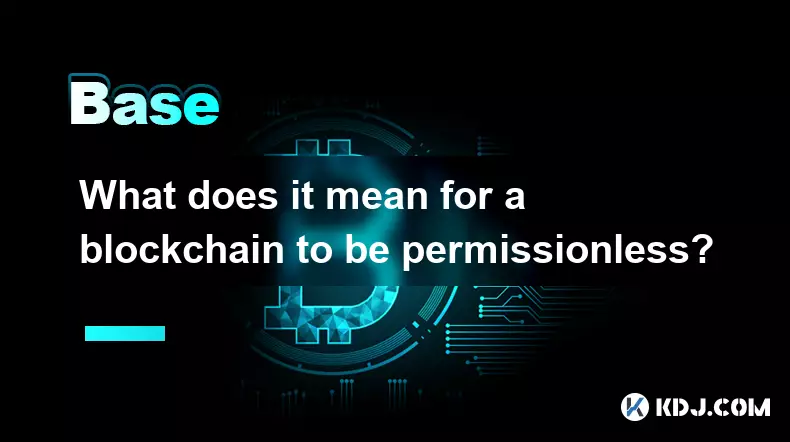
Understanding Permissionless Blockchains
1. A permissionless blockchain operates without centralized control, allowing anyone to join the network, validate transactions, and contribute to consensus. No gatekeeping authority determines who can participate, making the system open by design. This openness fosters inclusivity and decentralization, core tenets of many cryptocurrency projects.
2. In such networks, nodes can be run by individuals anywhere in the world. These nodes verify transactions and maintain copies of the ledger, ensuring transparency and resilience. The absence of restrictions means that even users with limited technical knowledge can access the network through wallets or mining software.
3. Cryptographic protocols secure the network, replacing the need for trust in a central entity. Participants rely on consensus mechanisms like Proof of Work or Proof of Stake to agree on the state of the ledger. These mechanisms incentivize honest behavior through rewards and penalties tied to economic stakes.
4. Anyone can inspect the code, propose changes, or fork the blockchain to create a new version if disagreements arise. This level of transparency empowers developers and users alike, promoting innovation and reducing dependency on a single development team or organization.
5. Censorship resistance is a direct outcome of permissionless design. Transactions cannot be easily blocked or reversed by any single party, even if governments or institutions oppose certain activities. This feature attracts users seeking financial sovereignty and privacy.
Decentralization and Security Implications
1. The distributed nature of permissionless blockchains makes them highly resistant to attacks. To compromise the network, an adversary would need to control a majority of computational power or staked assets, which is economically prohibitive in well-established systems.
2. Nodes independently validate every transaction, reducing the risk of fraudulent entries or double-spending. This peer-to-peer verification process ensures data integrity without relying on intermediaries.
3. Because no single entity governs the network, decision-making is decentralized. Protocol upgrades require broad community support, often achieved through signaling mechanisms or on-chain voting, depending on the blockchain’s design.
4. The immutability of recorded data adds another layer of security. Once information is written to the blockchain, altering it would require rewriting all subsequent blocks across most nodes, a task that is practically unfeasible.
5. However, this high level of security comes with trade-offs. Transaction throughput may be lower compared to centralized systems, and energy consumption can be significant, especially in Proof of Work models.
Economic Incentives and Network Participation
1. Miners or validators are rewarded for their role in securing the network. These incentives align individual interests with the health of the blockchain, encouraging long-term participation and honest behavior.
2. Token distribution in permissionless systems often occurs through mining or staking, allowing broad access to ownership. This contrasts with permissioned systems where tokens or access rights may be pre-allocated to select entities.
3. Users can earn passive income by staking their holdings or contributing computational resources, fostering a self-sustaining ecosystem. This model supports continuous network operation without relying on external funding.
4. Open participation means competition among validators or miners, which helps prevent monopolistic control. The barrier to entry is typically limited to technical setup and initial investment in hardware or tokens.
5. Economic models are designed to adjust over time, with emission rates decreasing or fees becoming the primary reward source as the network matures. This evolution aims to maintain sustainability and value accrual.
Frequently Asked Questions
What prevents malicious actors from overwhelming a permissionless blockchain?The consensus mechanism requires substantial resources to manipulate. For example, launching a 51% attack on Bitcoin would demand enormous capital and energy, making it economically irrational. Network participants also monitor for anomalies, increasing the likelihood of detection.
Can governments shut down a permissionless blockchain?Due to its decentralized structure, there is no central server or authority to target. Even if some nodes are taken offline, others continue operating. The network persists as long as a sufficient number of participants remain active globally.
How do users trust a system with no central oversight?Trust is transferred from institutions to code and cryptography. The open-source nature allows anyone to audit the software, while consensus rules ensure predictable behavior. Historical transaction data is publicly verifiable, reinforcing confidence in the system’s integrity.
Are all cryptocurrencies built on permissionless blockchains?No. While Bitcoin and Ethereum are prominent examples, some digital assets operate on permissioned ledgers controlled by organizations or consortia. These restrict participation and are often used in enterprise settings where regulatory compliance is prioritized over openness.
Disclaimer:info@kdj.com
The information provided is not trading advice. kdj.com does not assume any responsibility for any investments made based on the information provided in this article. Cryptocurrencies are highly volatile and it is highly recommended that you invest with caution after thorough research!
If you believe that the content used on this website infringes your copyright, please contact us immediately (info@kdj.com) and we will delete it promptly.
- Crypto Treasury, Startup Strategies, & Investment Opportunities: A New Yorker's Take
- 2025-09-04 09:05:12
- Moca Network's $20M Portfolio: A New Era for Community Rewards?
- 2025-09-04 09:05:12
- XDC Network Price Prediction 2026: Is XDC the Dark Horse of Crypto?
- 2025-09-04 08:25:15
- BullZilla Roar, Bonk Stablecoin, and Solana Alpenglow: The Evolution of Meme Coins
- 2025-09-04 09:25:17
- TRON, GDP Data, and the Commerce Department: A Blockchain Milestone
- 2025-09-04 09:25:17
- Dogecoin, VaultX, and DOT Miners: A New Era for Crypto Finance?
- 2025-09-04 07:05:16
Related knowledge

What is "backtesting" a crypto trading strategy?
Sep 03,2025 at 10:55am
Understanding Backtesting in Crypto TradingBacktesting is the process of evaluating a trading strategy by applying it to historical market data. Trade...

What is a "crypto trading bot" and do they work?
Sep 02,2025 at 04:19pm
Understanding Crypto Trading Bots1. A crypto trading bot is a software application designed to automate the process of buying and selling cryptocurren...

What is a "copy trading" platform?
Sep 02,2025 at 07:00pm
Understanding Copy Trading in the Cryptocurrency Space1. A copy trading platform allows users to automatically replicate the trades of experienced inv...
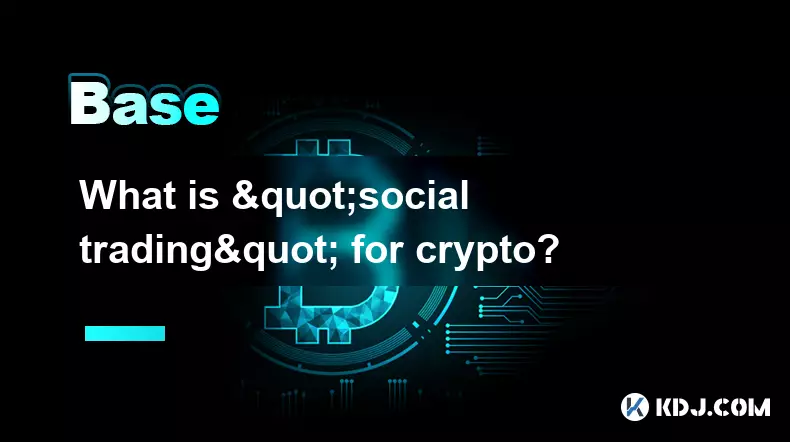
What is "social trading" for crypto?
Sep 03,2025 at 09:00pm
Understanding Social Trading in the Cryptocurrency Space1. Social trading refers to a method where investors observe, follow, and automatically replic...
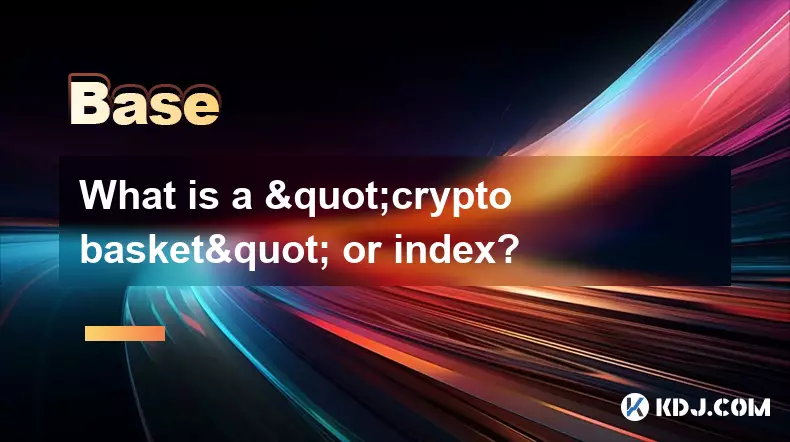
What is a "crypto basket" or index?
Sep 03,2025 at 07:01am
Understanding Crypto Baskets and Their Role in Digital Asset Investment1. A crypto basket refers to a curated collection of multiple cryptocurrencies ...
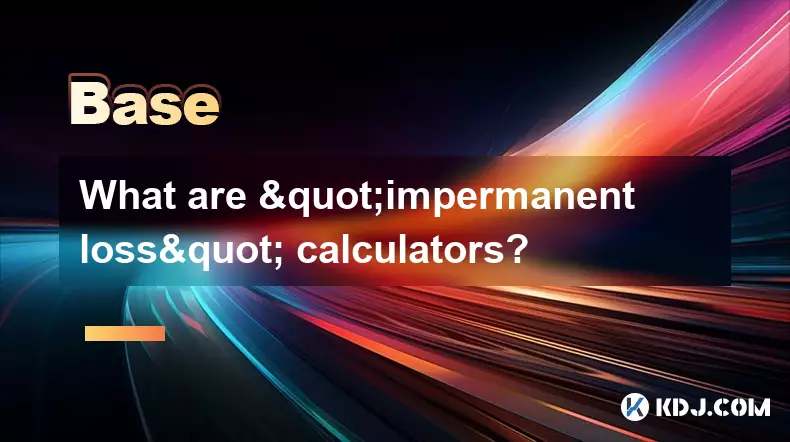
What are "impermanent loss" calculators?
Sep 03,2025 at 12:00pm
Understanding Impermanent Loss in Decentralized Finance1. Impermanent loss is a phenomenon that affects liquidity providers in decentralized exchanges...

What is "backtesting" a crypto trading strategy?
Sep 03,2025 at 10:55am
Understanding Backtesting in Crypto TradingBacktesting is the process of evaluating a trading strategy by applying it to historical market data. Trade...

What is a "crypto trading bot" and do they work?
Sep 02,2025 at 04:19pm
Understanding Crypto Trading Bots1. A crypto trading bot is a software application designed to automate the process of buying and selling cryptocurren...

What is a "copy trading" platform?
Sep 02,2025 at 07:00pm
Understanding Copy Trading in the Cryptocurrency Space1. A copy trading platform allows users to automatically replicate the trades of experienced inv...

What is "social trading" for crypto?
Sep 03,2025 at 09:00pm
Understanding Social Trading in the Cryptocurrency Space1. Social trading refers to a method where investors observe, follow, and automatically replic...

What is a "crypto basket" or index?
Sep 03,2025 at 07:01am
Understanding Crypto Baskets and Their Role in Digital Asset Investment1. A crypto basket refers to a curated collection of multiple cryptocurrencies ...

What are "impermanent loss" calculators?
Sep 03,2025 at 12:00pm
Understanding Impermanent Loss in Decentralized Finance1. Impermanent loss is a phenomenon that affects liquidity providers in decentralized exchanges...
See all articles























